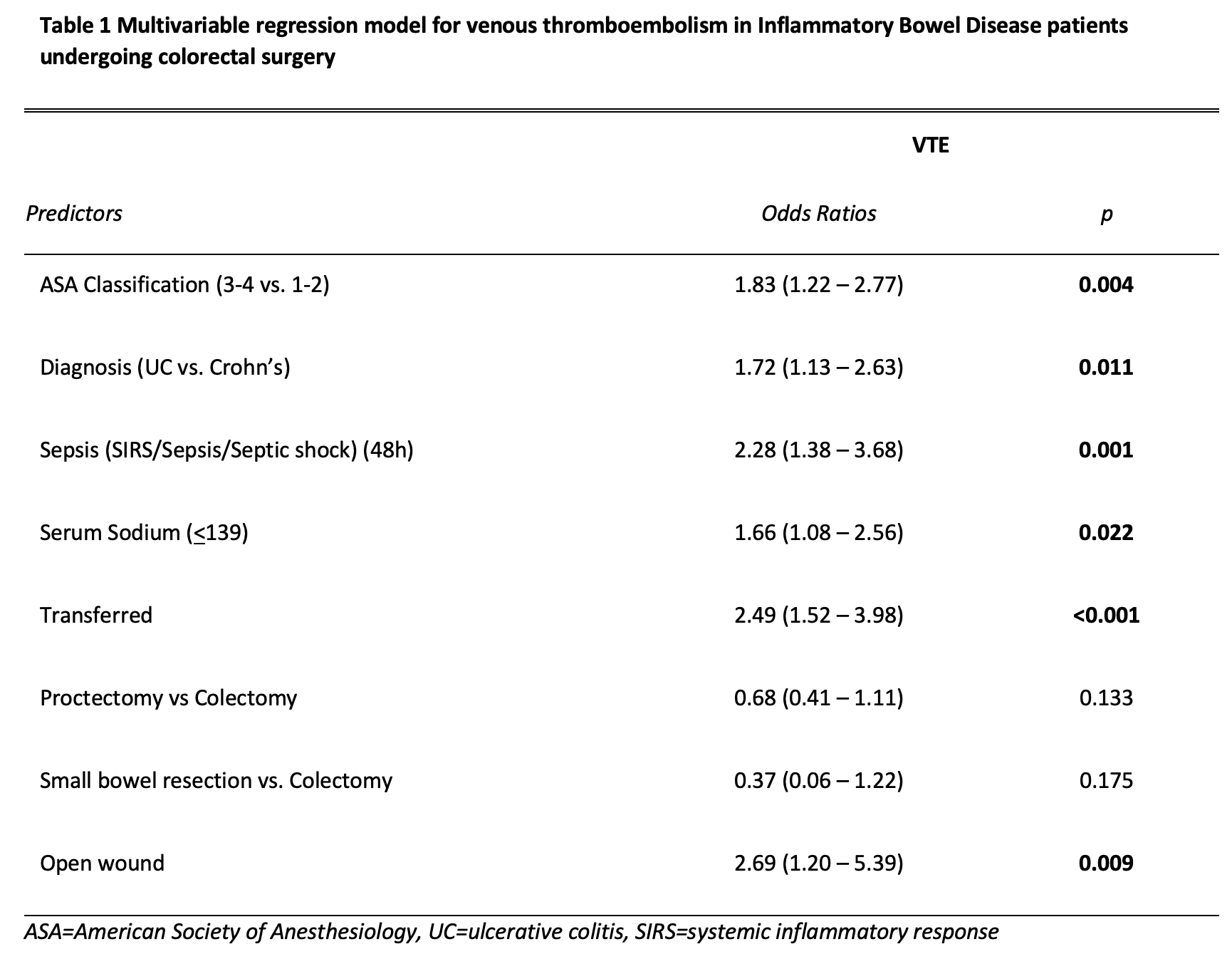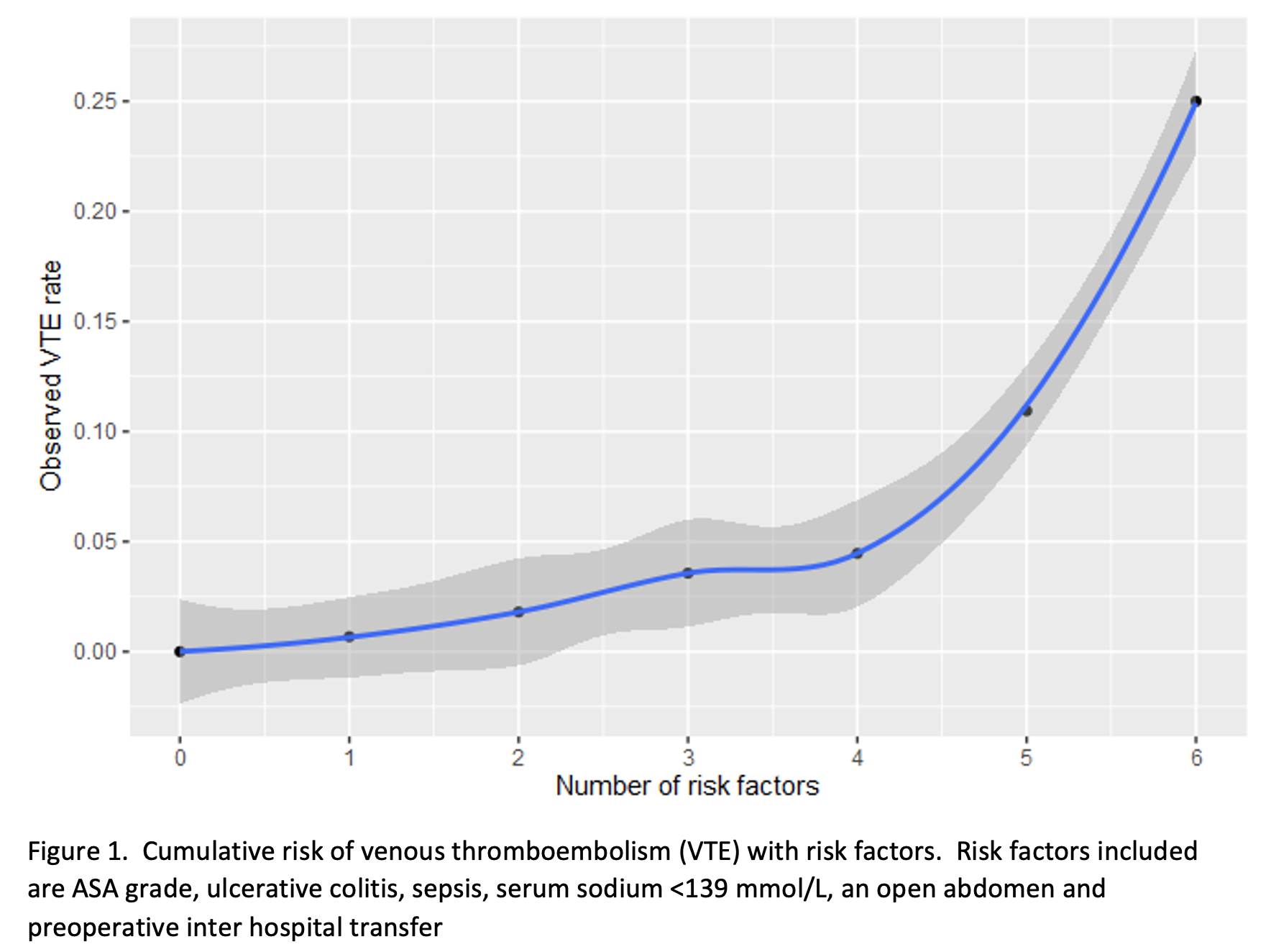RISK OF VENOUS THROMBOEMBOLISM AFTER SURGERY FOR INFLAMMATORY BOWEL DISEASE: THE NSQIP-IBD REGISTRY ANALYSIS
JU YONG CHEONG*, Tara M. Connelly, Xue Jia, Stefan D. Holubar
Colorectal surgery, Cleveland Clinic, Cleveland, OH
Background: Patients undergoing colorectal surgery for inflammatory bowel disease (IBD) are recognized to have an increased risk of venous thromboembolism (VTE). The aim of this study was to determine the perioperative risk factors for VTE and to create a predictive scoring system for VTE in the IBD cohort.
Methods: The NSQIP-IBD registry from 2017-2020 was used to identify patients for the study. Demographics, operative and outcomes data of IBD patients undergoing colectomies for IBD were analyzed. Student t and ?2 tests were used for univariate analysis. A logistic multivariate regression model was performed using all significant variables to develop a predictive scoring system of VTE.
Results: 5003 patients (51.9% male, mean age 42.7, 57.3% Crohn's/42.7% ulcerative colitis) were included in the study. 125 (2.49%) developed VTE. On multivariate analysis ASA grade, ulcerative colitis, sepsis, serum sodium <139 mmol/L, an open abdomen and preoperative inter hospital transfer were associated with greater risk of VTE (Table 1). An open abdomen postoperatively was associated with the highest odds of developing a VTE [2.69 (1.20 – 5.39, p=.009)]. Using these 6 significant factors, a risk model was created. The risk of VTE with one risk factor was 0.7% and 1.8% with two risk factors. The risk of VTE increased to 3.6% and 4.5% with three and four risk factors respectively. With five and six risk factors, the risk of VTE increased exponentially to 10.9%, 25% respectively (Figure1). 11.4% of patients were discharged with chemoprophylaxis, however this did not impact the rate of developing VTE (3.3% vs 2.39%, p=0.17).
Conclusion: This study affirms that multiple perioperative and operative factors increase the risk of VTE after surgery for IBD. We present a novel model which demonstrates a cumulative risk increasing exponentially when more than five risk factors are present.
Table 1 Multivariable regression model for venous thromboembolism in Inflammatory Bowel Disease patients undergoing colorectal surgery
Figure 1. Cumulative risk of venous thromboembolism (VTE) with risk factors. Risk factors included are ASA grade, ulcerative colitis, sepsis, serum sodium <139 mmol/L, an open abdomen and preoperative inter hospital transfer
Back to 2022 Abstracts
